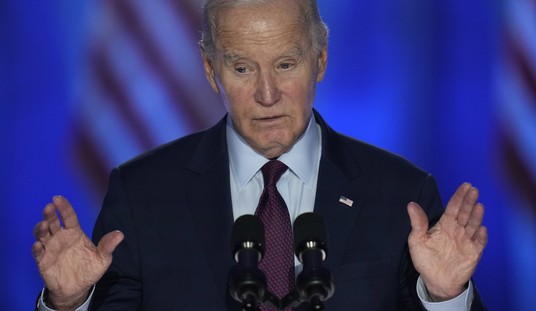It may sound like a fairy tale, but once upon a time the federal government operated in the black, running surpluses that allowed the Department of Defense (DoD) to make significant investments in experimental or future replacement equipment and weapon systems, without drawbacks, oversight or taxpayer scrutiny. Unfortunately, the clock has struck midnight and the budgetary fairy tale is long over.
There is no question that investing in our nation is important. However, we are no longer living in the lap of defense spending luxury and taxpayers aren’t willing to turn a blind eye to wasting billions of dollars on unnecessary programs. And, regardless of the financial situation of the country, it makes no sense to continue to use taxpayer money on outdated and severely flawed programs.
According to a recent Government Accountability Office (GAO) defense acquisitions report, the Pentagon is set to spend $1.5 trillion to acquire 85 separate weapons programs in the coming years. The GAO also estimates that those 85 programs will experience a projected $411 billion in cost growth and average delays of 27 months.
When it comes to consensus in Washington, there is often little. However, in a time where budget restraint should be the norm, billions of dollars of wasteful defense spending is not something either Republicans or Democrats are able to ignore. Realizing the federal government has been getting away with highway robbery of taxpayers, Representatives Mac Thornberry (R-Tex.) and Adam Smith (D-Wash.) are leading the charge to completely overhaul defense acquisitions. It’s time the Pentagon stop gambling billions of dollars on fantasy defense programs that will have little to no real impact on improving the systems our warfighters need to meet today’s threats, and start taking real reform seriously.
Programs like the F-35 Joint Strike Fighter have become one of our nation’s most recent and most expensive acquisition failures. The Pentagon estimates it could spend $396 billion—equivalent to the GDP of Sweden—to purchase 2,456 of these aircrafts by the late 2030s. This supposedly stealthy replacement is louder than today’s fighter jets and the F-35’s software and systems development continues to fall gravely behind schedule. What started out as a joint effort by the Air Force, Navy, and Marine Corps to develop an aircraft they can all use and that would reduce development costs, duplicative processes development and time has become nothing more than a waste of billions on what was great in theory. However, the DoD could have updated the F-16, the F/A-18 and the AV-8B, some of the most capable jets in the world, and saved taxpayers $4.5 billion in the current fiscal year alone.
Recommended
Unfortunately, the F-35 is not an isolated incident. In 1982, the Army began developing the Light Helicopter Experimental (LHX) program to replace the Vietnam-era OH-58 Kiowa helicopter. The LHX, which later become known as the Comanche, spent over 20 turbulent years in development. In 2004, the faltering program was ultimately cancelled by then-Secretary of Defense Donald Rumsfeld, after the Pentagon had wasted $7 billion on the failed helicopter replacement program. In 2010, DoD realized they could modernize the Kiowas to meet the Army’s present and future needs at a cost of $4.1 billion or less.
Instead, the DoD wasted nearly twice the cost required to modernize the proven technology the Army needed—sending $7 billion and 30 years down the drain for a pie-in-the-sky “solution,” that left them back at square one.
Wasteful spending is not limited to military aircrafts. For 30 years the Navy has relied on land-attack cruise missiles, known as Tomahawk, to effectively execute their combat missions. After spending the last decade in active theater supply for reliable missiles is low and demand is high. The Navy needs to replenish their stock and improve their systems to be able to meet the demands of evolving global security threats.
In 2009, the Defense Advanced Research Project Agency (DARPA) initiated the development of the Long Range Anti-Ship Missile (LRASM), a $90 million, two-track system designed to replace Tomahawk by 2015. Technical problems led to the cancellation of one track and the other track is plagued with rising costs and a continually delayed delivery date. The reality is that the $90 million originally estimated, has now sky rocketed (pun intended) to more than $400 million for LRASM, and it is likely a decade away from being battle-ready. On top of the $400 million, it now appears that the Pentagon is ready to spend an addition $200 million for fiscal year 2015. For a fraction of the price, the Pentagon could have redesigned proven Tomahawk technology that would meet the Navy’s changing needs and be available by 2015.
At a time when budgets are decreasing and threats are increasing, the Pentagon shouldn’t be spending money the US doesn’t have, on technology our warfighters won’t be able to use for decades. This is true especially when there are viable, significantly lower cost solutions that would meet the more pertinent needs of our military and better address today’s evolving national security threats.
With layers of complicated bureaucratic processes and political support from lawmakers, the Pentagon has been able to get away with wasting billions of dollars on needless defense procurement projects, for far too long.
The Pentagon, Congress and the Administration must realize that when you have something that works, stick with it. Commit money to evolve successful technology and learn from its failures to create next-generation systems, without wasting billions of dollars, years of institutional knowledge and jeopardizing national security on what will never be the next prince charming.























Join the conversation as a VIP Member